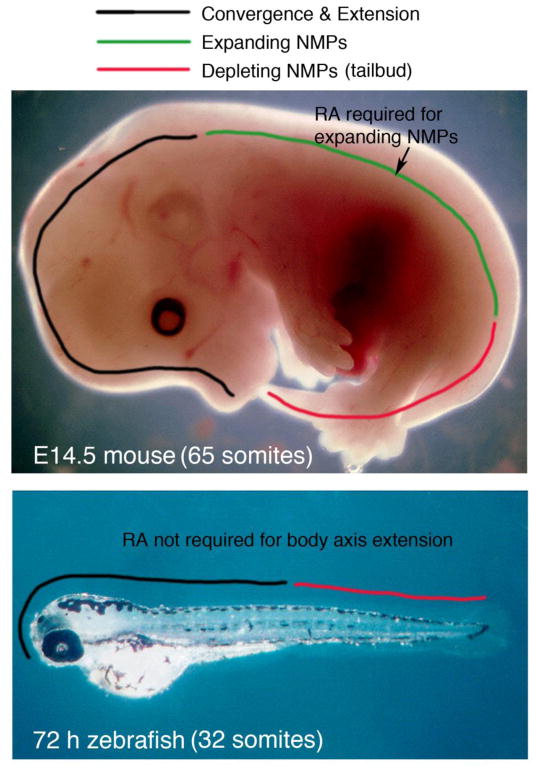Fig. 2.
Model comparing mechanisms of body axis extension in zebrafish and mouse. Mouse and zebrafish body axis extension occurs differently in that mouse utilizes expanding-NMPs that extend the trunk body axis (spinal cord and somites), whereas the zebrafish trunk is formed by continued gastrulation convergence and extension movements after the head forms; both mouse and zebrafish utilize depleting-NMPs to generate the tail spinal cord and somites (Steventon and Martinez Arias, 2017). Our studies here show that zebrafish body axis extension does not require RA, whereas previous studies demonstrated that the mouse RA requirement for body axis extension is limited to the trunk somites (Cunningham et al., 2011), suggesting that RA controls expanding-NMPs but not depleting-NMPs.

